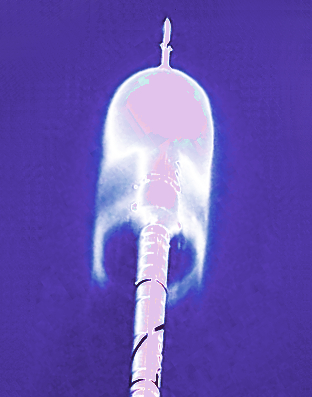Local duo take hold of hypersonics
 Two Australian engineering students will get a chance to test their hypersonic ideas in a project that could revolutionise modern transport.
Two Australian engineering students will get a chance to test their hypersonic ideas in a project that could revolutionise modern transport.
The work of University of Sydney aeronautical engineering PhD researchers Jonathon Jeyaratnam and David Munk has seen them score positions on the European Space Agency’s HEXAFLY-INT hypersonic flight team.
ESA is spending millions on its ambition to fly from Brussels to Sydney in just 2 hours, pushing civil aircraft to mind-boggling speeds.
The HEXAFLY project seeks to create a sub-scale flying model of a hypersonic plane by 2019.
Hypersonic flight – travelling above Mach 5, or 6125 km/hr - has been the holy grail of aeronautical research for more than six decades says Dr Gareth Vio, a research supervisor at Sydney Uni.
“David and Jonathan are coming up with radical new concepts for take-off trajectory and tail designs. The ESA was impressed by the Honors theses of both these students and invited them on-board the HEXAFLY-INT team based in Australia,” Dr Vio said.
David's work involves designing algorithms that assist in novel structural designs for the aircraft that will support the high temperature of hypersonic flight.
“One of the main concerns is extreme heat,” Mr Munk said.
“An aircraft experiences high thermal stresses and a significant reduction in material strength and stiffness when it is taking off or flying at supersonic speeds.
"To combat this reduction in strength and rigidity I am designing an optimal algorithm that will determine the best structural layout for such craft.
“My algorithm will add to the innovative structural concepts being created to handle the harsh environment experienced by the high-speed vehicles.”
David’s colleague Jonathan is concerned with how the aerodynamic design of hypersonic craft will handle the very different low-speed flows experienced at take-off and landing.
“The aerodynamics of a hypersonic plane is very different to a standard civil aircraft" says Jonathan who will build a low-speed model for testing at the University's Marulan airstrip.
“I'm looking at the variation in the sizing, positioning and dihedral (upward) angle of the vertical tail to find out if their positioning can improve the lateral stability but not compromise performance of a craft that travels at Mach 7.
“I think perhaps an extension of the outboard portion of the wings at the tail may improve the stability of the vehicle at low speed and also improve performance.”
The speed record for a manned plane has stood for decades, held by the Blackbird SR-71 spy plane, which hit 3529km/hr at California’s Beale Air Force Base in 1976.








 Print
Print